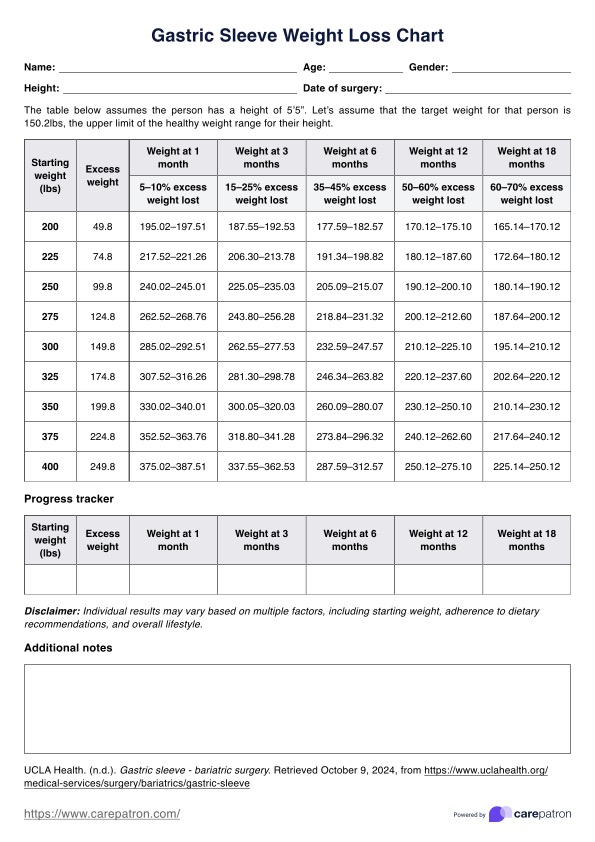Patients typically begin losing weight immediately after surgery, with noticeable results within the first month. Most patients lose 5-10% of their excess weight during this initial period.

Gastric Sleeve Weight Loss Chart
Use our Gastric Sleeve Weight Loss Chart template to effectively manage patient expectations and track progress before or after the gastric sleeve procedure.
Use Template
Gastric Sleeve Weight Loss Chart Template
Commonly asked questions
Several factors can impact weight loss results, including a patient's starting BMI, adherence to dietary recommendations, physical activity levels, and overall health. Age and pre-existing health conditions may also play a role.
Maximum weight loss is typically achieved between 12 and 18 months after surgery. Patients usually lose 60-70% of their excess weight by this time, but results may vary.
EHR and practice management software
Get started for free
*No credit card required
Free
$0/usd
Unlimited clients
Telehealth
1GB of storage
Client portal text
Automated billing and online payments











